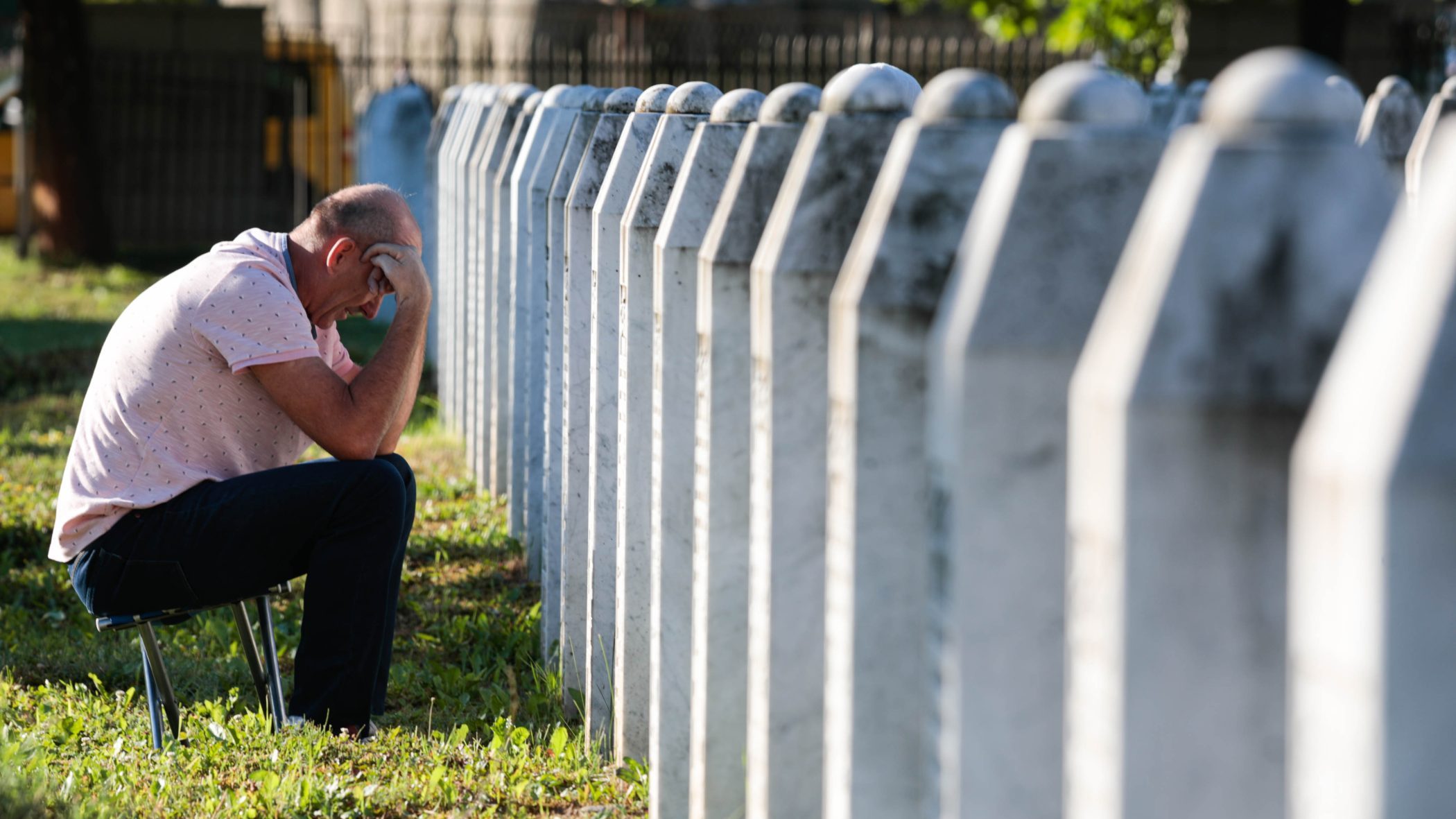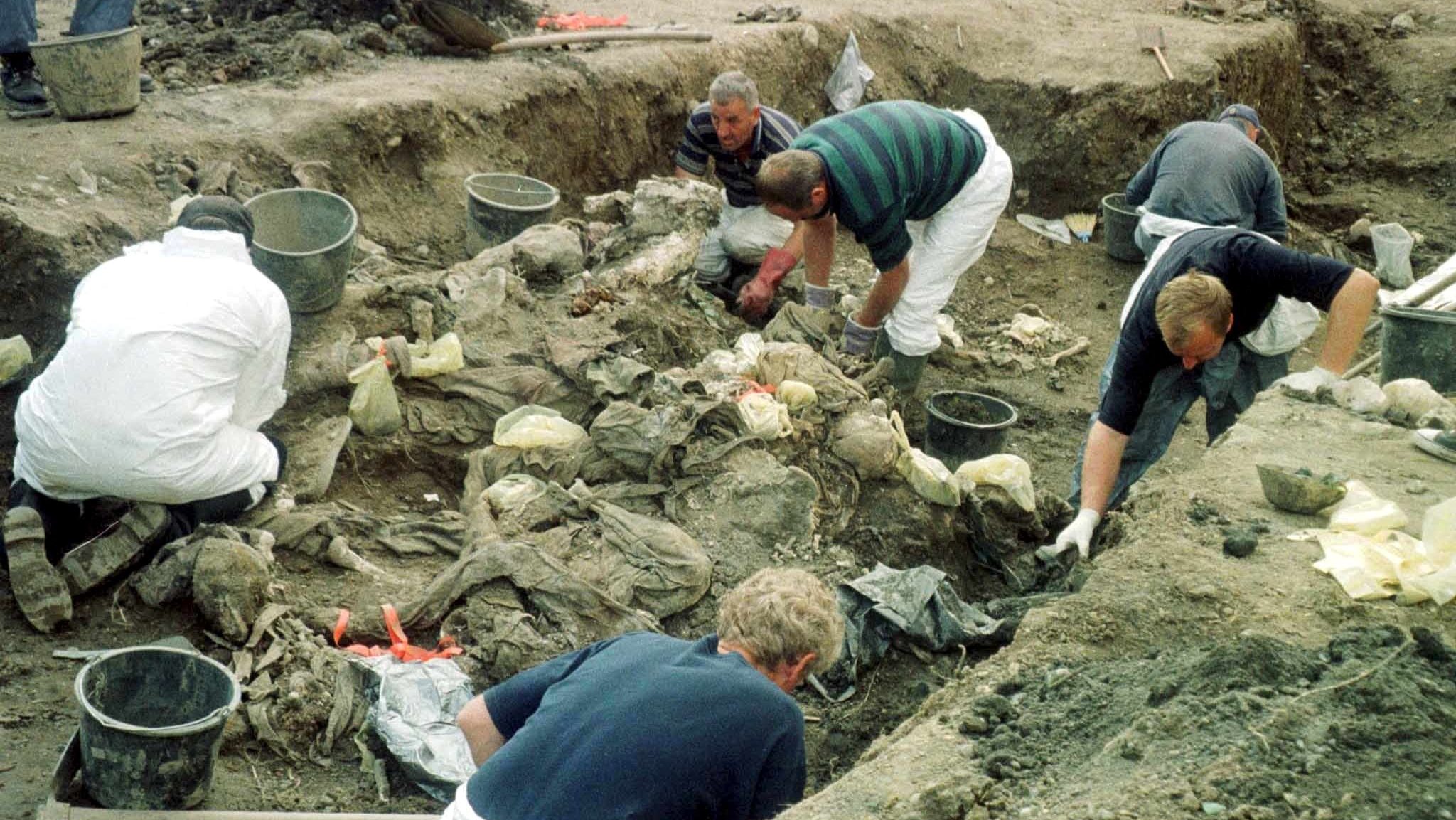This post is also available in: Bosnian
His Defence denies that he participated in the murder of more than 1,000 men in the premises of the Kravica Agricultural Cooperative in Bratunac municipality, and considers it will be able to prove this when it starts presenting evidence, which is due to begin on June 17.
Numerous Prosecution witnesses, including protected witness I1, one of the survivors, spoke about what happened in Kravica, including the alleged shooting of more than a thousand of men, relocation of their bodies from one grave to another and efforts to conceal evidence of the crime.
“The hangar was packed with people. I managed to get through to the wall and squatted. All of a sudden, I heard explosions. They threw bombs inside the place, fired grenades and shot at us… It lasted until nightfall. In the morning I heard trucks and buses, collecting bodies and driving them away. I covered myself with two corpses and kept quiet. I saw some survivors, who were killed a short time later. I knew I must not come out and say I was alive,” I1 recalled.
The witness managed to escape to the woods the following night. He arrived to Zepa 12 days later.
The Prosecution of Bosnia and Herzegovina considers that Ivanovic participated, on July 13, 1995, in capturing several thousand men who were trying to flee from the Srebrenica protected zone, and escorted them to the Kravica Agricultural Cooperative, where they were shot.
Witnesses said that, following the fall of the protected zone of Srebrenica, most residents gathered in front of the UNPROFOR Base in Potocari, while men tried to go through the woods and get to the territories controlled by the Army of Bosnia and Herzegovina.
“Only a few of us knew the road. I remember many people walking around in groups. Just like me they did not know where they were going. This happened on July 12,” I1, who was captured on that day, said.
17-year old Enver Husic walked through the wood on that day. Husic, his brother, father and many neighbours headed towards Tuzla, but they were captured and held on a meadow in Sandici village.
“Even now, when I see some forest I remember everything. I remember the smell of human blood, the bodies of killed people lying on the road, the unbearable heat and huge fear. I still cannot believe that my brother and I survived. I also do not believe I will ever find my father,” Husic said. He left Srebrenica by hiding in a bus full with women and children.
Marko Aleksic, Commander of the First Unit with the Second Special Police Squad, said he ordered “my people” to guard the road leading from Sandici to Konjevic polje, in Bratunac municipality, taken by the captured Bosniaks, in July 1995.
“The column consisted of about 500 civilians, who, as far as I can remember, were guarded by special policemen from Skelani. The convoy passed by us and nothing unusual happened. There were no incidents,” Aleksic said, adding he heard sporadic shooting and blasts coming from the direction of Kravica later that day.
Aleksic said he knew Zeljko Ivanovic, who was a member of the Special Unit from Sekovici, but it was not the person sitting in the courtroom. Witness Dragomir Stupar said the same thing.
A few Prosecution witnesses said they did not see indictee Ivanovic in Kravica on July 13, but witness Zoran Eric explained that all soldiers had the so-called “phantom caps on their heads” on that day, so their faces could not be seen.
The indictment alleges that Ivanovic took part in escorting the men to Kravica. Once the men had been detained in the hangars, he and other members of the Second Squad stood in a semi-circle and started shooting at the detainees.
“At the Cooperative complex entrance, a group of soldiers were taking some men into a hangar. The men held up their hands. As it was getting dark, things became worse. I could hear screams and calls for help… All the people in the hangar were killed. Those who survived the horror of the night were killed in the morning,” Eric said.
Towards the end of the evidence presenting the Prosecution read a statement given by Luka Markovic, former Cooperative Manager, who had since died. In his statement Markovic said he witnessed the mass murder of men in Kravica on July 13, 1995.
“On that day 17 buses, full with men dressed in civil suits, arrived at the Agricultural Cooperative. (…) The shooting started in the evening hours. At first I heard a short burst, followed by shooting that made every thing around me shake. Within the next half hour or so, everything was over. It was quiet until the morning, when communal factory workers came to collect the corpses,” Markovic said.
Ranko Simic, a driver with the VRS, and Ostoja Stanojevic, a driver with the Civil Protection Unit in Zvornik, spoke about the removal of bodies from the Kravica Agricultural Cooperative, in which they participated.
“The horrible and intensively unpleasant smell could be sensed as we were approaching the hangar in Kravica. Pairs of people, wearing masks, carried the bodies out and put them on the loading machine. (…) I drove the truck to Glogova, where a grave had already been dug. Several bodies had already been buried in it, but I cannot say how many as I could not look at it…” Stanojevic said.
Simic said similar things, adding the Glogova village grave was opened three months after the corpses had been buried in it and the bodies were transferred to Zeleni jadar.
“I shall never forget the machines digging out the bodies and the land,” the witness said.
The Prosecution completed its presentation of evidence by examining Vedo Tuco, court medicine expert, who said that a total of 1,056 bodies, linked to the massacre committed in Kravica, had been identified so far.
According to the findings and opinion presented by the court expert, the bodies of people, killed in the Kravica hangar, were first buried in nine primary mass graves called Glogova and two graves called Ravnice and then transferred to several secondary graves.
The trial of Ivanovic began in August 2009, two months after he had pleaded not guilty to all counts contained in the indictment. The indictee was arrested in March 2009. He has been held in custody since then.
Erna Mackic is BIRN’s Justice Report journalist. Justice Report is BIRN online publication.

